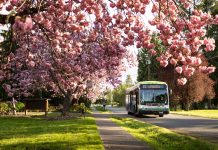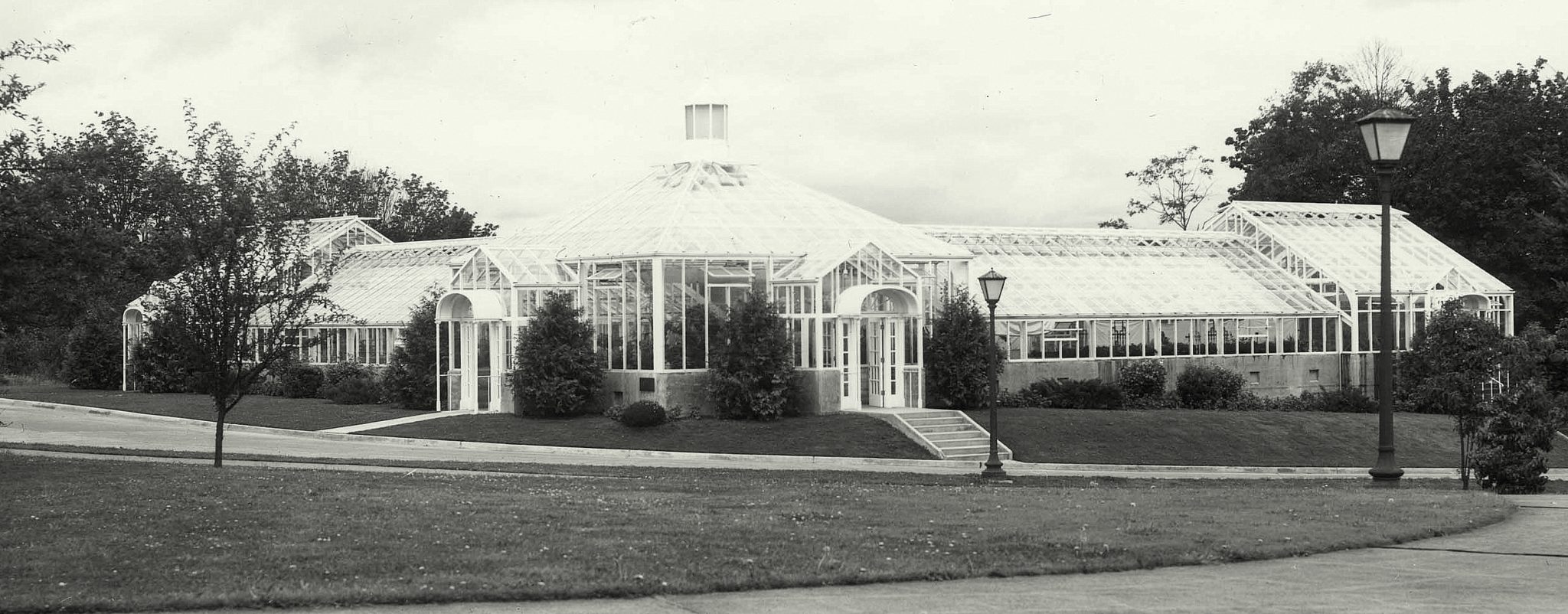The Washington State Capitol campus in Olympia has seen many changes over time. Buildings have been constructed to house various agencies, and some have been torn down when no longer needed. One of these buildings is the Capitol Conservatory, formerly known as the Washington State Capitol Greenhouse, which is now scheduled for demolition. Changing circumstances have rendered it unusable.
 Located at 115 Water Street SW, the conservatory was built as part of a Great Depression work relief project under the Public Works Administration. It was one of numerous projects throughout the nation that in the 1930s provided temporary employment to many people in a time of massive unemployment. This project included a new office building, an addition to an existing office building for a State Highway Department Materials Testing Lab and a greenhouse. The new greenhouse was to be located northeast of the Temple of Justice and intended to replace a greenhouse (behind the Governor’s Mansion) which had been razed to construct office buildings.
Located at 115 Water Street SW, the conservatory was built as part of a Great Depression work relief project under the Public Works Administration. It was one of numerous projects throughout the nation that in the 1930s provided temporary employment to many people in a time of massive unemployment. This project included a new office building, an addition to an existing office building for a State Highway Department Materials Testing Lab and a greenhouse. The new greenhouse was to be located northeast of the Temple of Justice and intended to replace a greenhouse (behind the Governor’s Mansion) which had been razed to construct office buildings.
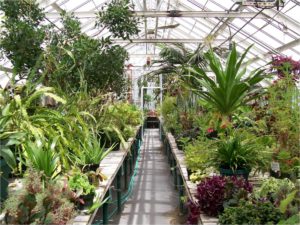
Forty-five percent of the project’s funds came from the federal budget and the rest from the state. The greenhouse section would cost a total of $25,000. In July 1938, the state accepted the federal grant, but it would undergo three revisions before final acceptance in December.
Joseph H. Wohleb, a prominent Olympia architect, was chosen to complete design of the greenhouse and oversee its construction. Wohleb also designed a number of buildings on the State Capitol campus, including the Transportation Building, Public Lands and Security Building and the Highway Building as well as other structures around Olympia.
In December 1938, the H. R. Rolsen Company of Tacoma was given the contract to build the materials testing laboratory and greenhouse. The latter’s construction began on December 30 and was completed the next year on August 4. In 1963, 24 years later, the greenhouse was expanded with a north wing and the original cupola was removed. The lower level of the new wing created an office, shops and storage space for campus gardeners. The conservatory was repaired in 1968 with a new entry porch and new steel roof framing. Later repairs would also modify the building.
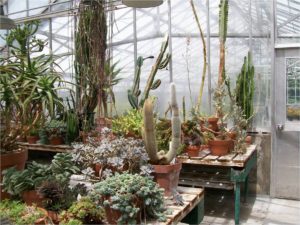
A working building from the start, the greenhouse served the campus for many years. Dozens of gardeners over the decades propagated flowers and plants for the campus. At the height of its operations in the 1950s, the Conservatory staff raised over 70,000 flowers and plants each year to plant seasonally on the campus grounds. They also grew and prepared cut flowers for state agencies and the executive mansion. In the 1960s, gardeners estimated they prepared thirty to forty bouquets each legislative session, their busiest season for that type of work.
The conservatory also became a popular tourist destination as people came to see its rare and exotic plant collection. The collection of plants grew to include about 500 varieties of tropical and desert plants from around the world, particularly Asia, Africa, and South America. This included a very interesting collection of cacti.
In 1989, the conservatory celebrated its 50th birthday, the same year the state celebrated its centennial. To honor the centennial, local pioneer descendants donated a 4-foot Christmas cactus that had been a wedding present to Dora Reames on her marriage to William Hoffman in 1893 and was still thriving nearly a century later.
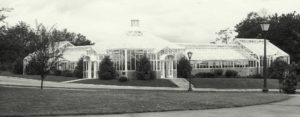
Already, the state was looking to relocate greenhouse operations off campus. The move never did happen and the conservatory was permanently closed in September 2008 due to structural problems that posed a risk to workers and the public.
The conservatory is built on sixty feet of fill dirt on the bluff above Capitol Lake. Over time the foundation had settled, causing cracks in the greenhouse building and distorting its window frames. This phenomenon has been documented by monitoring devices and surveys. The metal frame of the conservatory has also become rusted, making it dangerous to remove or reuse any of the building. Structural problems on the nearby road also need attention. All these compounding issues seem to spell the end for the conservatory.
When it closed, the conservatory’s collection was dispersed. The orchids and cacti went to local nurseries, while the other plants were sent to surplus. The state gardeners retained offices and shop space in the basement, though this is a temporary arrangement.
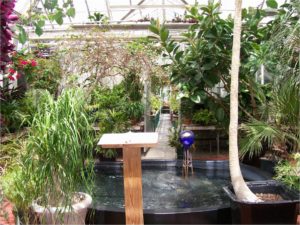
Although the greenhouse is scheduled to be demolished, the State Capitol campus remains an interesting place to visit for its plants and other sights. There are beautiful flowers in the sunken garden various interesting trees, including the Moon Tree.
Take a tour of the campus using the new, interactive map, which includes an extensive guide of the trees and plants on the campus today. Details found here.
Special thanks to Marygrace Goddu (Washington State Department of Enterprise Services Cultural Resource Manager), Brent Chapman (Department of Enterprise Services Horticulturist) and Mary Schaff (Washington State Library Reference Librarian) for their assistance with information and photos.









